
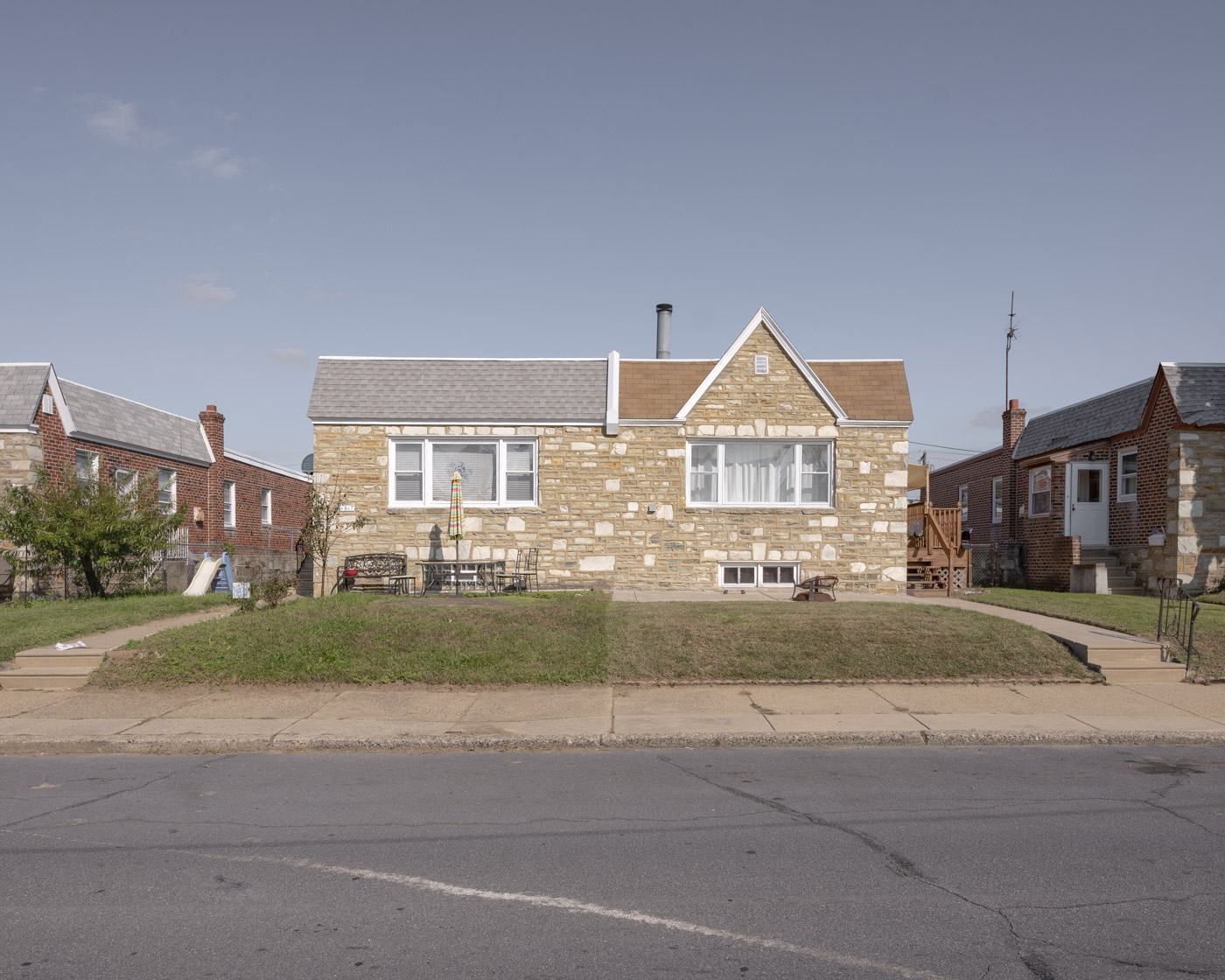
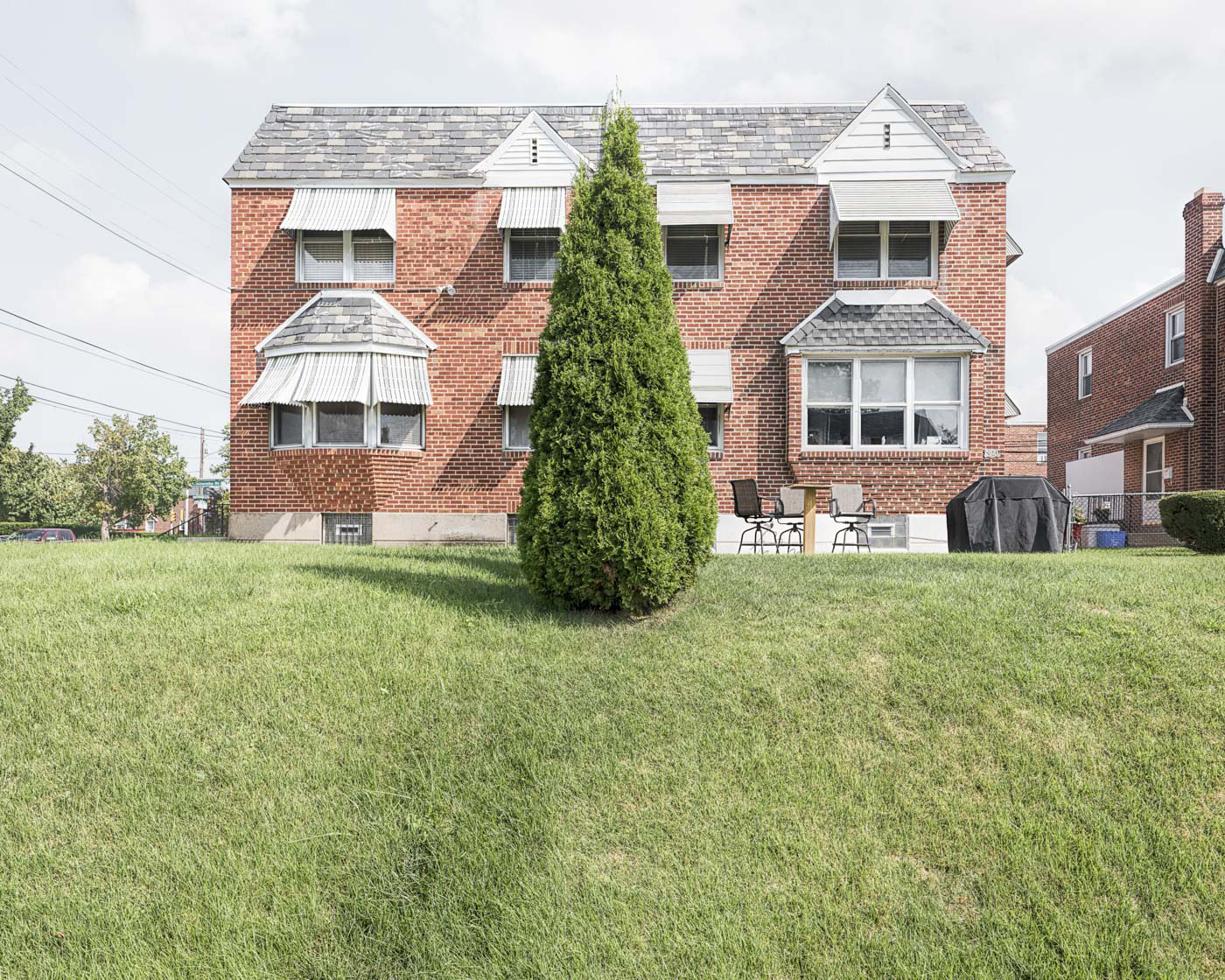
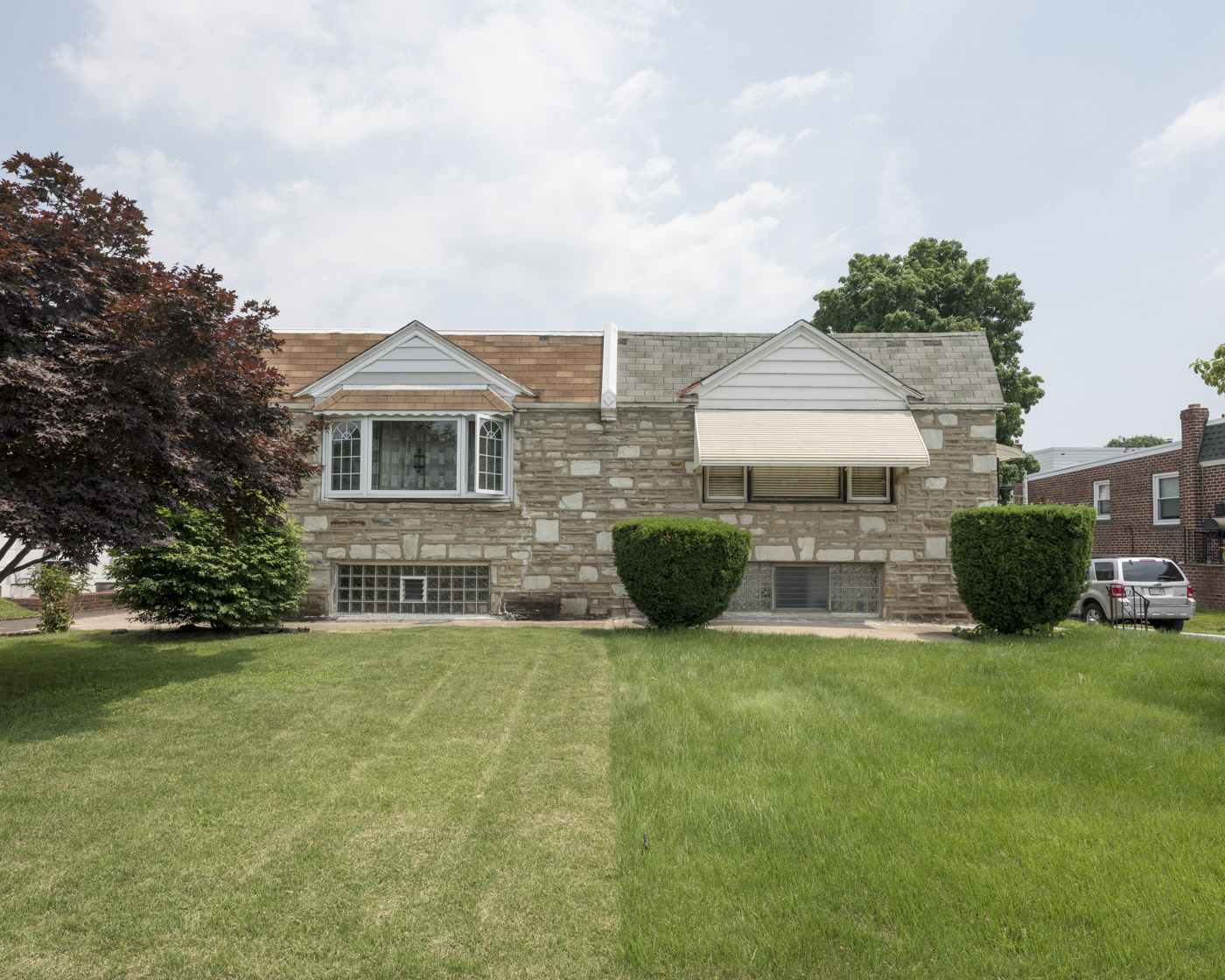
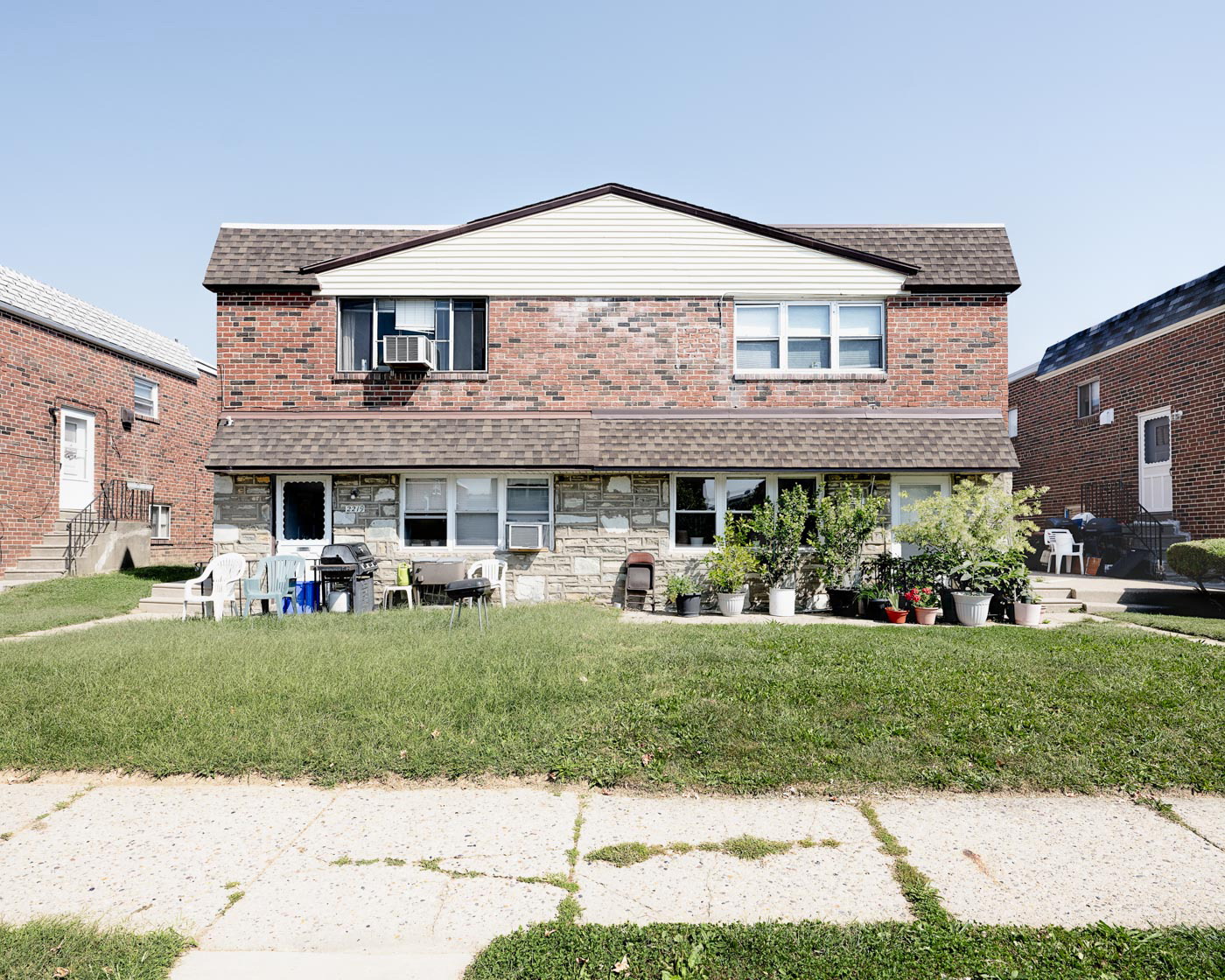
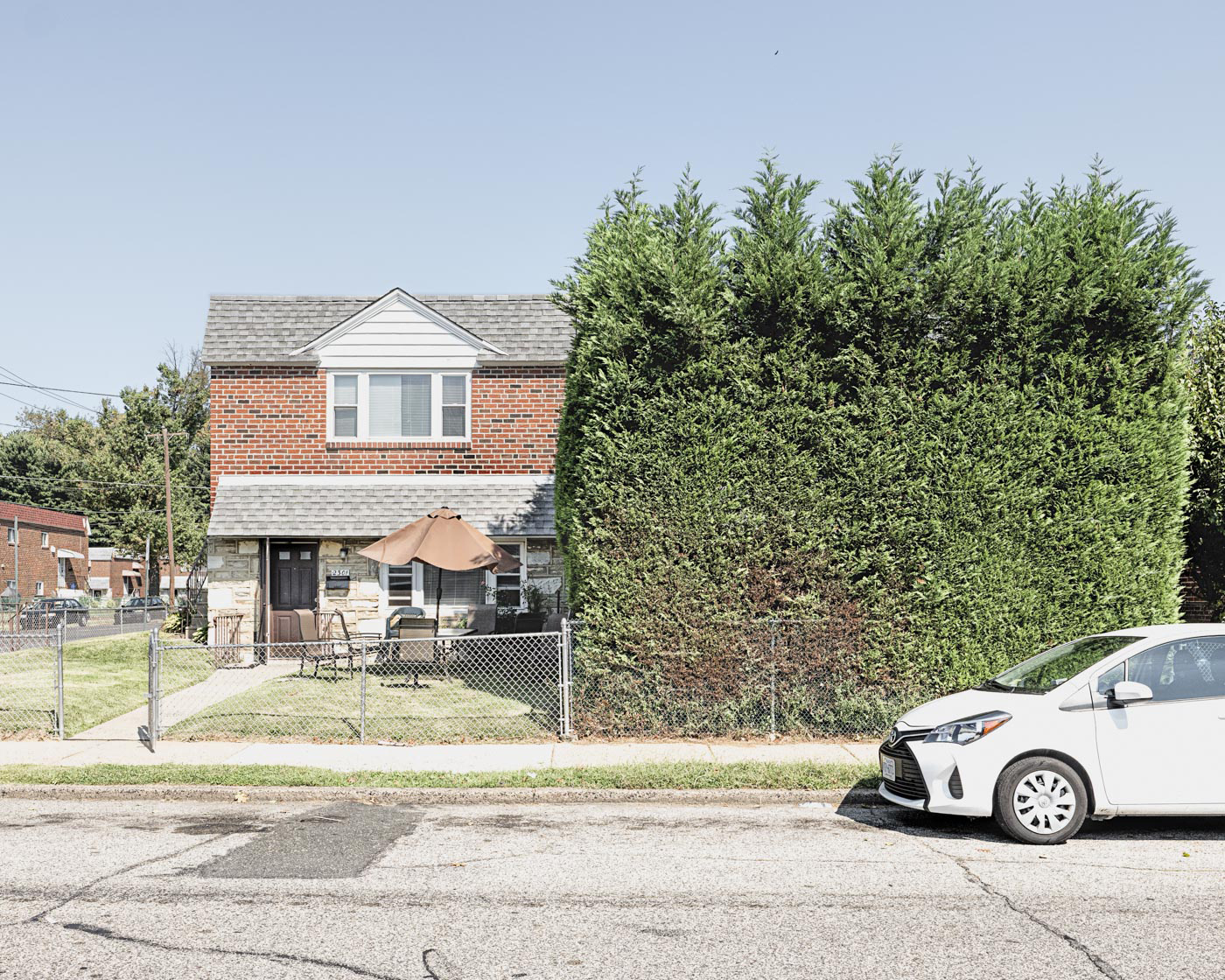

Artist's Statement
Ira Wagner
The twinhouses of The Great Northeast neighborhood of Philadelphia reflect how people share a common border. Some families choose to mark their space with a fence or shrubbery. Others differentiate themselves with varying architectural elements and subtle changes to trim, windows and paint colors. One family chooses to hide completely behind a tall hedge; another lives in front of the house with common backyard elements – chairs, grills, patio tables, open for all to see. Common upkeep, such as mowing the lawn, ends at a rough approximation of the property line rather than being shared. One side of a structure shows pride of ownership, the other is missing a shutter on a window. When borders are such an important issue in the world, these images reflect a human inclination to mark and delineate one’s space rather than share it.
The Great Northeast section of Philadelphia shows what was built in response to the search for the American dream, even within the city limits. These modest homes are variations on a theme of two side by side houses that share a common wall. To create some variety, architectural elements appear pasted on the front of the box – various materials, gables, dormers, rooflines and trim. Because of the shared occupancy within a single structure, little has changed in these houses since they were built. As a result, this area of Philadelphia shows much of the original intent of the architects, developers and residents. Yet, over time, small differences have emerged that reflect how people live together as neighbors, differentiate their own property, customize their slice of suburban living and make their property their own.

